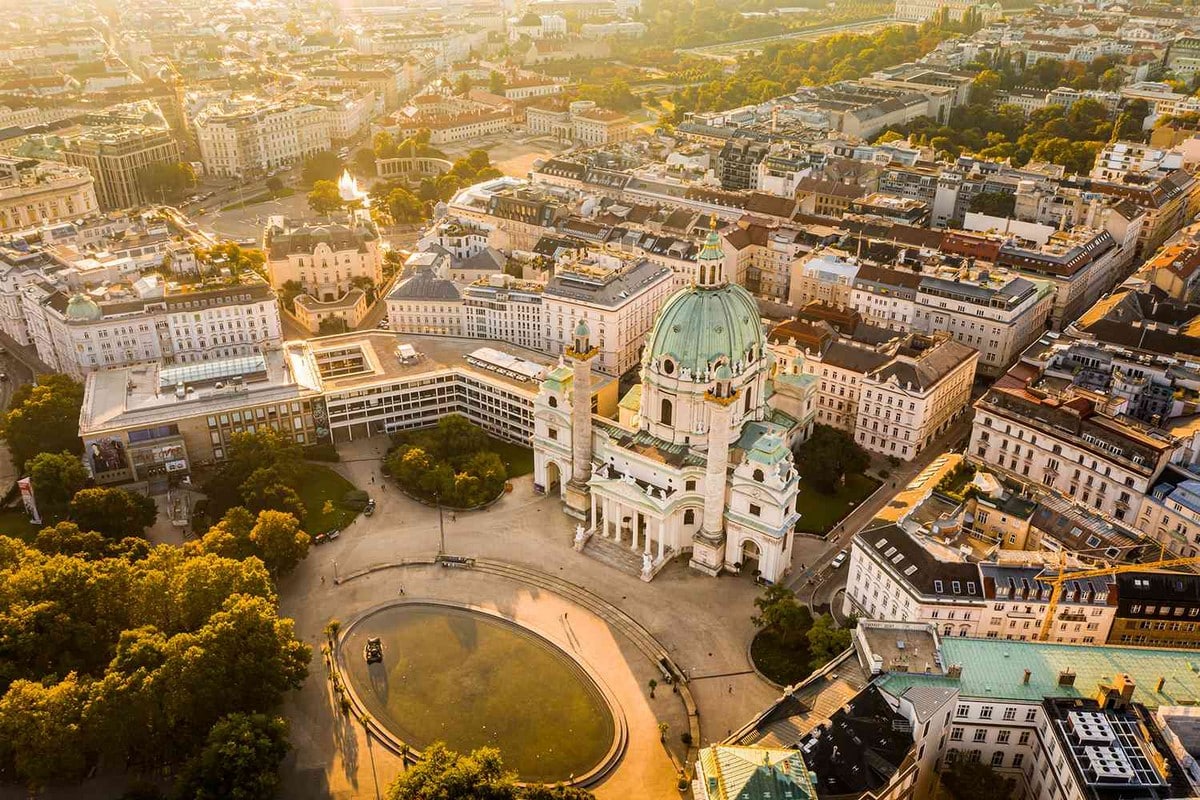Vienna is the capital city of Austria. It was once the center of the Austro-Hungarian Empire, and its palaces, museums, and opera houses bear witness to this glorious past. It is home to several world-famous cultural institutions, including the Vienna State Opera, the Museum of Fine Arts, and the Austrian National Library. Beyond its cultural offerings, Vienna is also a city of great natural beauty, with large parks, the Vienna Woods, and the Danube River offering ample opportunities for outdoor recreation. Visitors to Vienna can experience the city’s history, art, music, and nature, making it a fascinating and vibrant destination.
Vienna is known for its rich cultural heritage, stunning architecture, classical music, world-famous cultural institutions, and beautiful parks and natural areas. It’s renowned for its classical music, with many famous composers having lived and worked there. It’s a city that offers a fascinating blend of history, culture, and natural beauty.
The Schönbrunn Palace
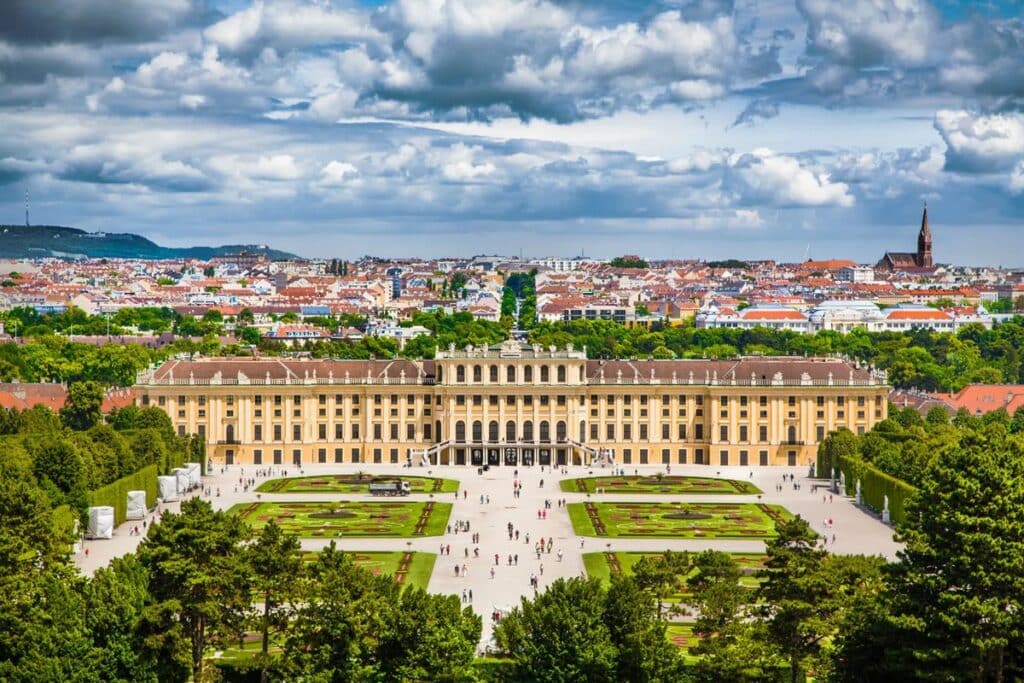
Schönbrunn Palace is a former imperial summer residence located in Vienna, Austria. It was built in the late 17th century and has been a major tourist attraction for over 250 years. The palace features over 1,441 rooms, including the imperial apartments, the famous Hall of Mirrors, and the oldest zoo in the world. The palace’s grounds are home to over 2 km of paths, including the famous Great Parterre, a vast formal garden. Schönbrunn Palace is a UNESCO World Heritage Site and is considered one of the finest examples of Baroque architecture in the world.
St. Stephen’s Cathedral
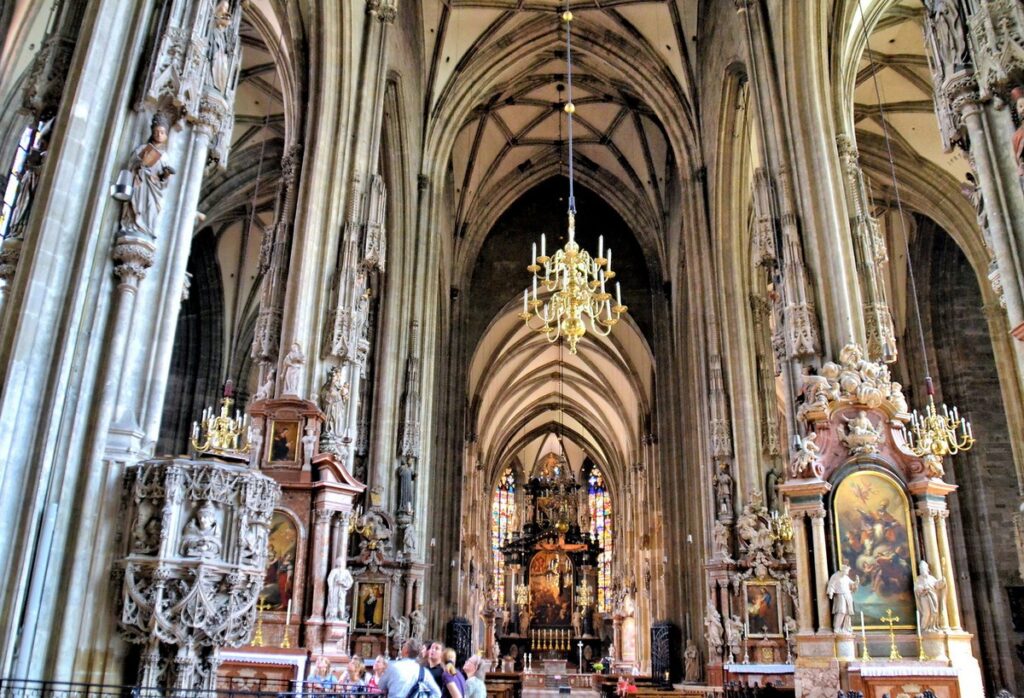
St. Stephen’s Cathedral is a prominent landmark in Vienna, Austria’s heart. It is one of the city’s most recognizable symbols and has been an important religious and cultural center for over 700 years. The cathedral’s history is reflected in its architectural style, combining Gothic and Romanesque elements. Its ornate exterior features a distinctive multi-colored tiled roof, while its interior is adorned with intricate carvings and sculptures. Visitors to the cathedral can climb the 343 steps of the south tower for panoramic views of the city.
Walk Through the Ringstrasse
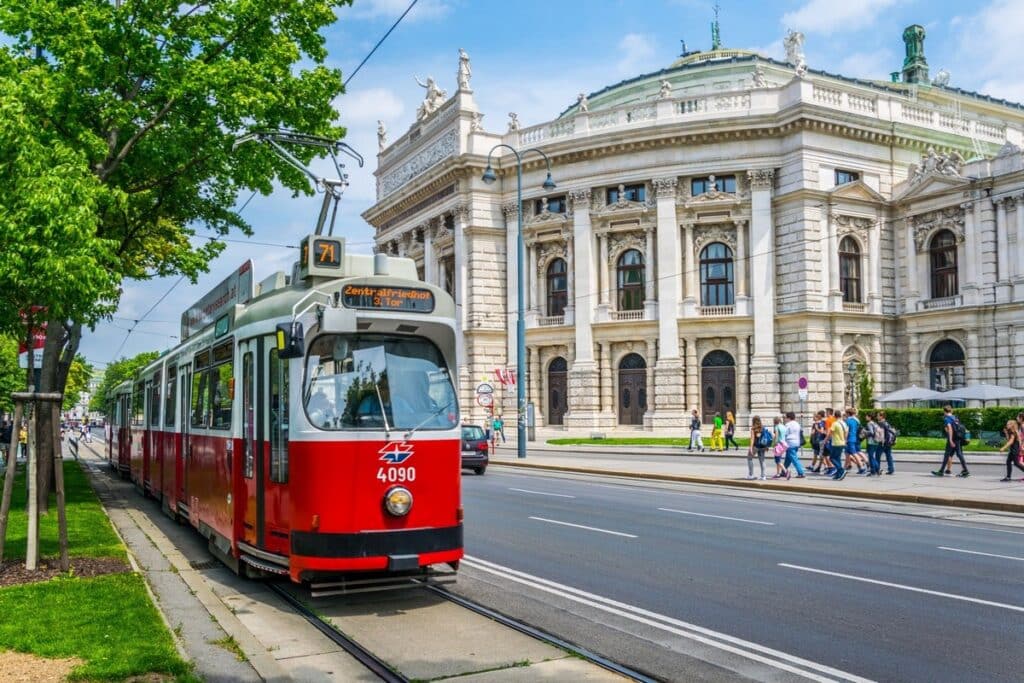
The Ringstrasse is a grand boulevard that encircles the center of Vienna. It was built in the mid-19th century to replace the city’s old medieval walls. It is lined with some of the city’s most impressive architectural landmarks, including the State Opera House, the Hofburg Palace, the Natural History Museum, and the Parliament building. The Ringstrasse is considered one of the finest examples of the “Ringstrassenstil” style of architecture, a fusion of neo-Renaissance, neo-Gothic, and neo-Baroque styles. It is a popular destination for tourists and locals, offering a variety of shops, restaurants, cultural institutions, and several public parks and gardens.
Stroll Through the Prater
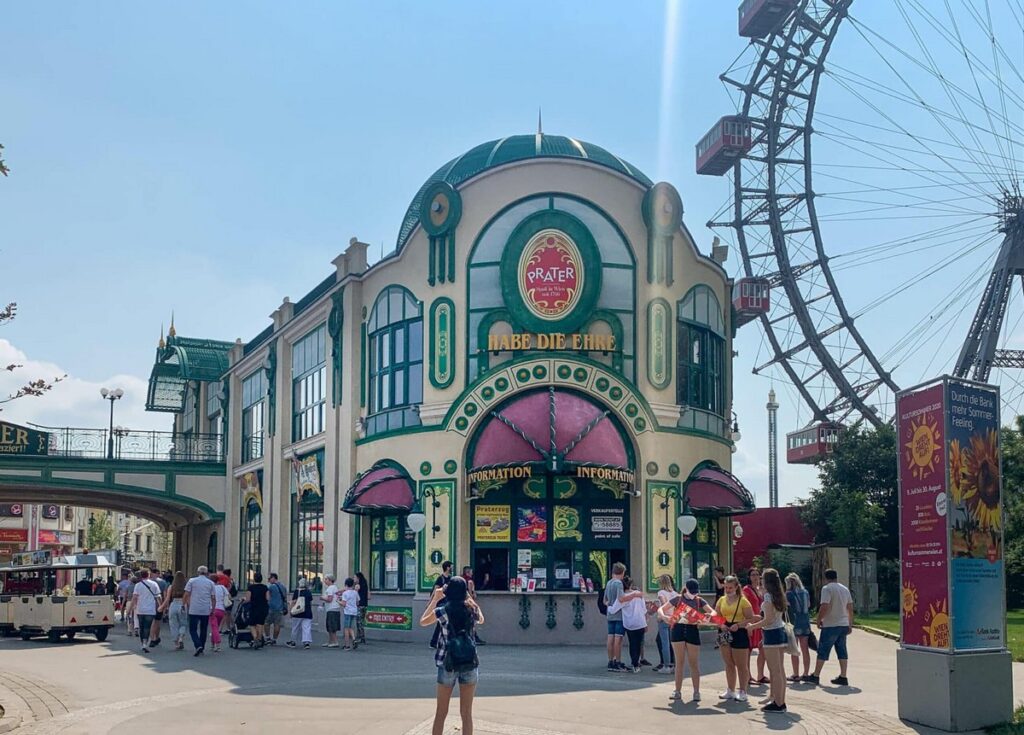
The Prater is a large public park located in Vienna. It covers an area of over 2.5 square kilometers and is home to various attractions, including a theme park, museums, and sporting facilities. The park is also home to the famous Wiener Riesenrad, a giant Ferris wheel that has been a Vienna landmark since 1897. The Prater has a long history, dating back to the 12th century when it was used as a hunting ground for the Austrian nobility. Today, the park is a popular recreational area for Viennese residents and visitors, offering a peaceful escape from the city’s bustling streets.
Boat Tour of the Danube Canal
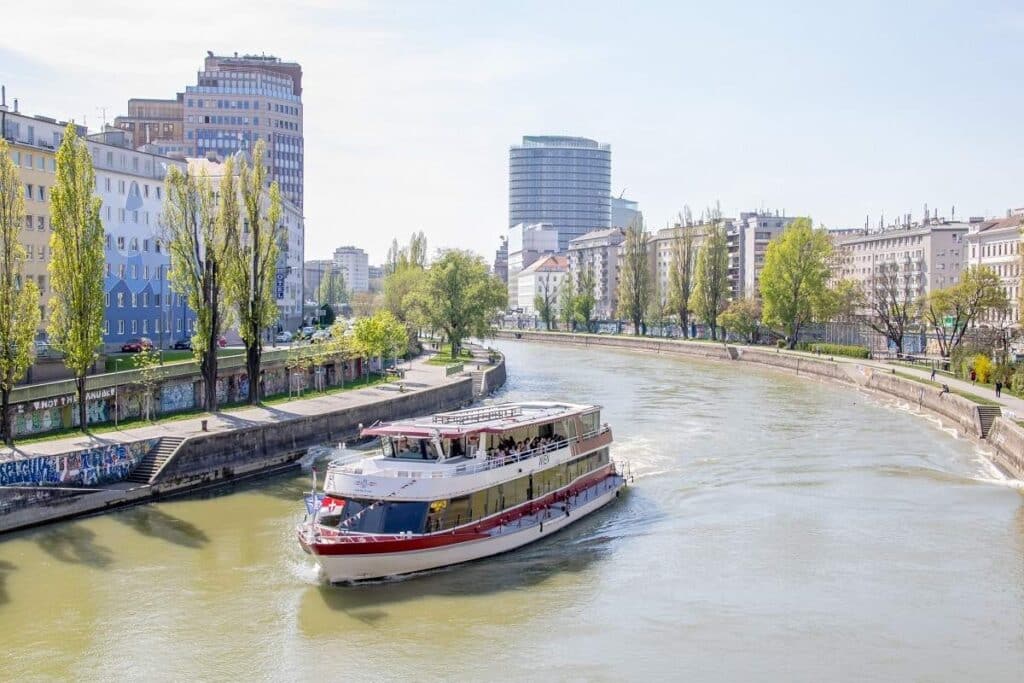
A boat tour of the Danube Canal in Vienna is a unique and relaxing way to experience the city. The canal runs through the city and is lined with historic buildings, picturesque parks, and colorful street markets. The boat tour offers panoramic views of the city, allowing tourists to take in its stunning architecture, including the famous St. Stephen’s Cathedral, the State Opera House, and the Hofburg Palace. During the tour, one can enjoy the lush greenery along the canal’s banks, relax in the shade of a tree, or sit back and enjoy the scenery as it unfolds.
Open-Air Naschmarkt
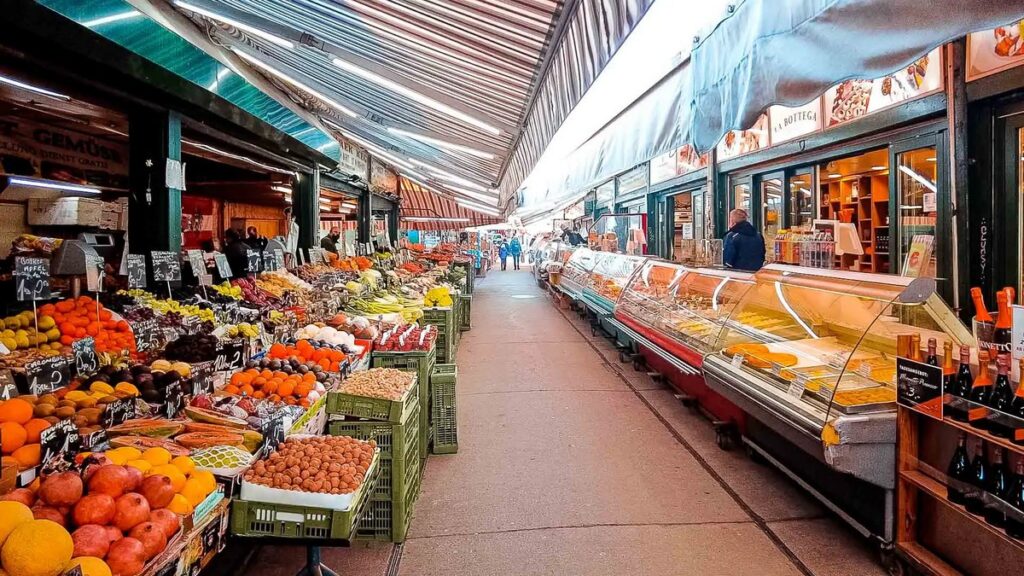
The Naschmarkt is a popular open-air market located in Vienna. It has been a staple of the city’s culinary scene for over 400 years and is a popular destination for locals and tourists. The market is a vibrant mix of sights, sounds, and smells, offering a range of foodstuffs, from fresh produce to exotic spices. Visitors can sample a variety of specialties, from traditional Austrian dishes to exotic cuisine from around the world. In addition to the food stalls, the Naschmarkt is also home to a variety of specialty shops and street vendors, selling everything from handmade crafts to vintage clothing.
The Kunsthistorisches Museum
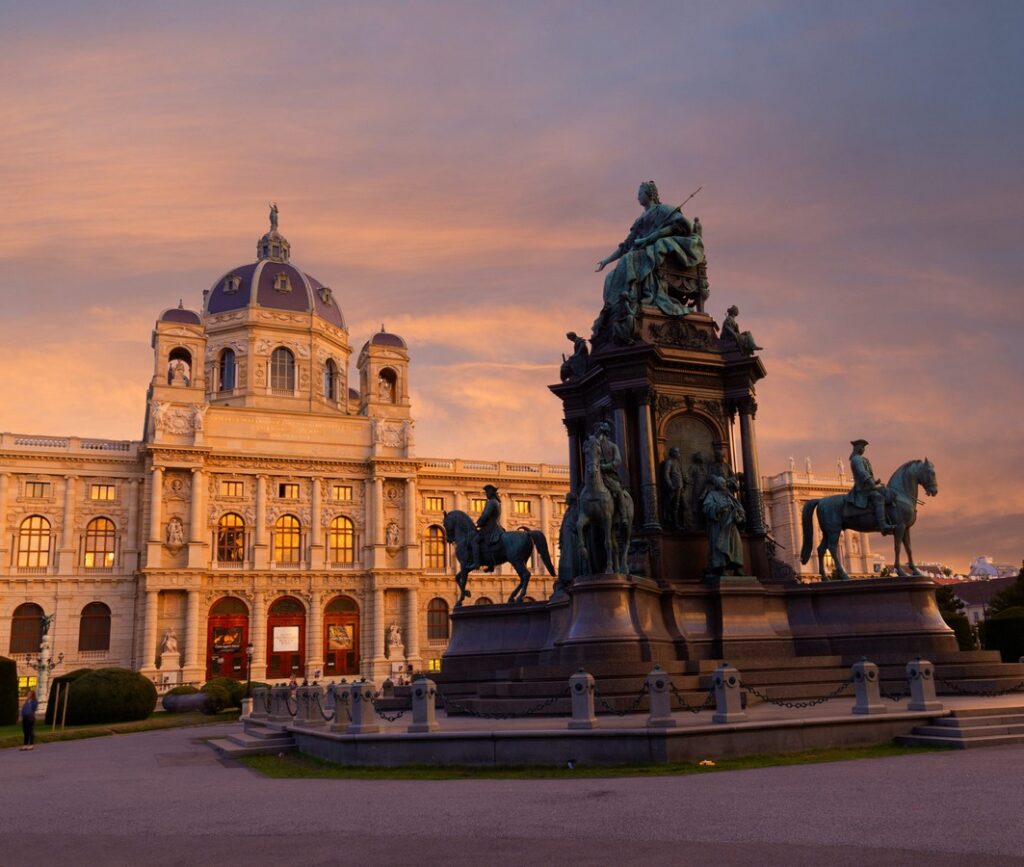
The Kunsthistorisches Museum (Art History Museum) is world-renowned in Vienna. It was founded in the late 19th century and is home to a vast collection of art and artifacts covering over 5,000 years of art history. The museum’s collection is particularly strong in Renaissance and Baroque art. Its holdings include masterpieces by some of the greatest artists of all time, including Albrecht Dürer, Pieter Bruegel the Elder, and Rubens. The museum’s grand architecture and opulent interiors, richly decorated halls, and ceiling frescoes provide a fitting backdrop to the treasures within.
The Museum Quarter
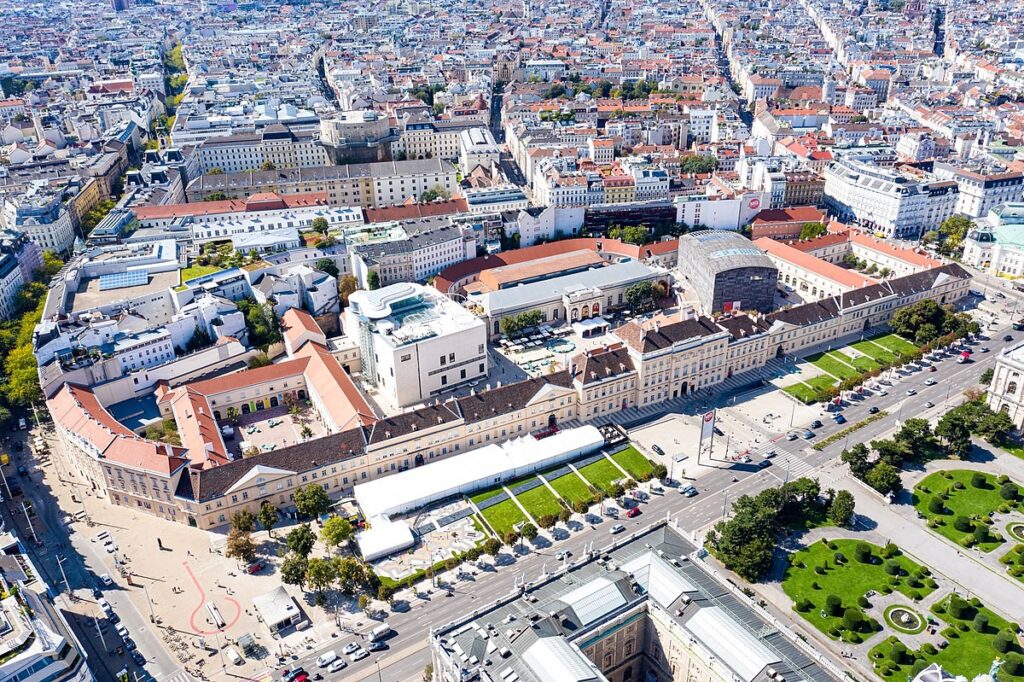
The Museum Quarter in Vienna is a cultural district home to several of the city’s most important museums and cultural institutions. Located in the heart of Vienna, the Museum Quarter is home to museums of fine arts, natural history, and contemporary art, as well as several theaters, galleries, and libraries. The district is known for its historic architecture, beautiful parks, and world-class cultural offerings. Visitors to the Museum Quarter can enjoy exhibitions and performances, explore the city’s rich history and culture, and take in the vibrant energy of one of Europe’s most vibrant cities.
Diverse and Vibrant Nightlife
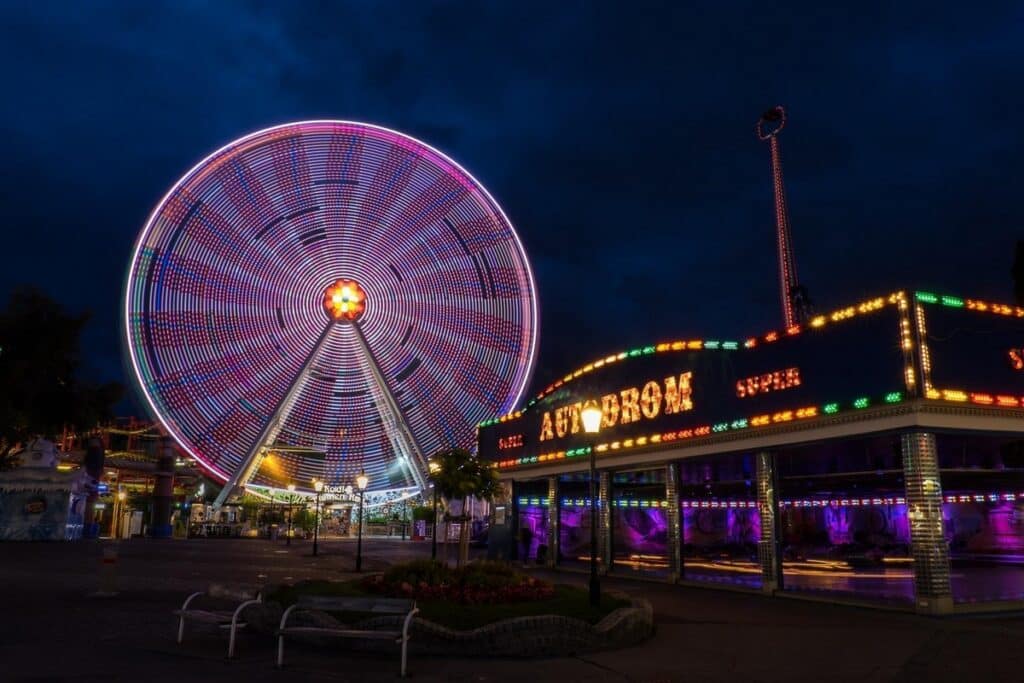
Vienna’s nightlife is diverse and lively, offering something for everyone. The city is home to various bars, clubs, and music venues, ranging from traditional jazz clubs and intimate wine bars to modern clubs and rooftop bars with stunning views of the city. Whether one is looking to dance the night away or relax with friends over a drink, Vienna has a thriving nightlife scene that caters to all tastes and styles. For those interested in classical music, Vienna is also home to several renowned concert halls and opera houses, offering a range of performances throughout the year.
The Belvedere Palace
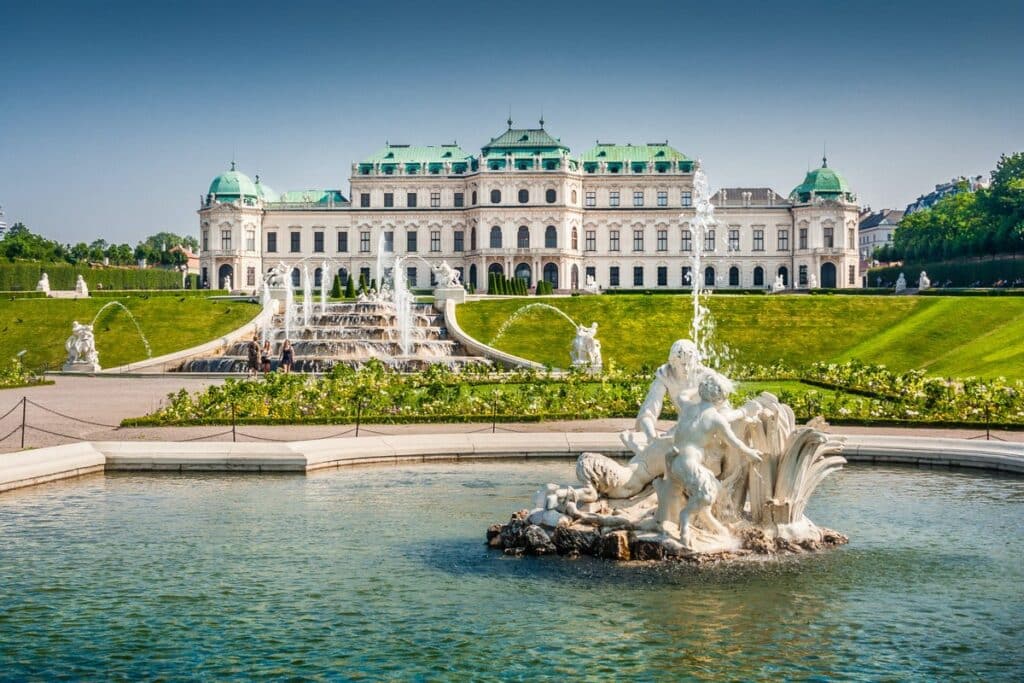
The Belvedere Palace is a historical building complex located in Vienna, Austria. It was built in the late 17th century as a summer residence for Prince Eugene of Savoy and consisted of two baroque palaces, the Upper and Lower Belvedere, as well as beautiful gardens and grounds. The palaces are notable for their stunning architecture and opulent interiors, including ornate rooms decorated with frescoes, gilded moldings, and grand chandeliers. The Upper Belvedere houses one of the largest collections of Austrian art, including works by Gustav Klimt and Egon Schiele. At the same time, the Lower Belvedere is used for temporary exhibitions and events.
The Historic Vienna Zoo
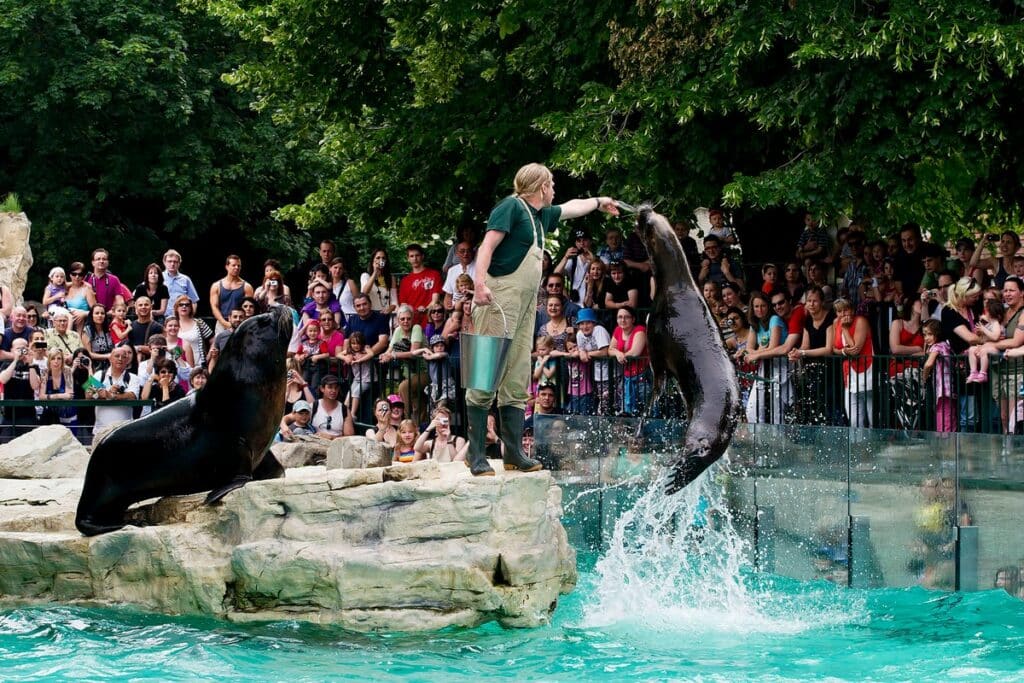
The Vienna Zoo, officially known as the Schönbrunn Zoo, is a historic zoo in Vienna. It is one of the oldest zoos in the world, having been established in 1752, and is home to over 700 species of animals from around the world. The zoo is known for its beautiful baroque architecture, spacious animal enclosures, and commitment to conservation. Visitors can explore the zoo’s lush grounds, see a wide variety of animals, and learn about the zoo’s conservation efforts. The zoo is also home to several interactive exhibits and educational programs, making it a great destination for families and animal lovers.
Shopping at Stephansplatz
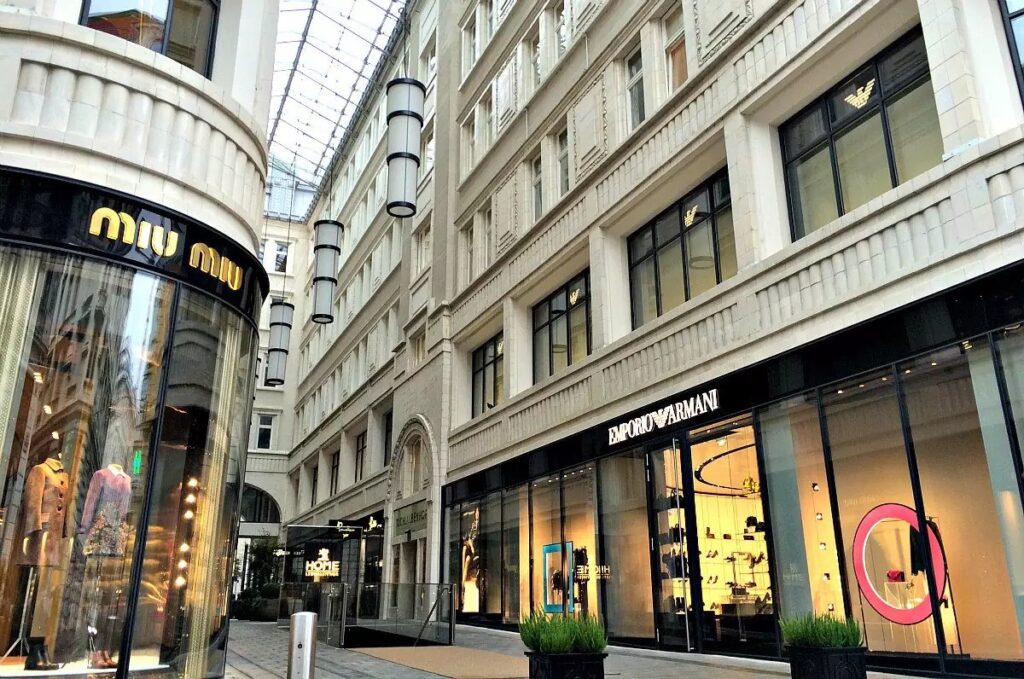
Stephansplatz is a central square in Vienna known for its vibrant shopping scene. The area is home to various shops, including luxury boutiques, department stores, and specialty shops. Visitors to Stephansplatz can find everything from high-end fashion and jewelry to local souvenirs and gifts. The square is also surrounded by several historic buildings and charming cafes, making it a popular destination for shopping and sightseeing. For those looking for a more traditional shopping experience, the nearby Graben and Kärntner Strasse streets are lined with traditional Austrian shops selling handmade crafts, traditional clothing, and other locally made products.
The Museum of Natural History
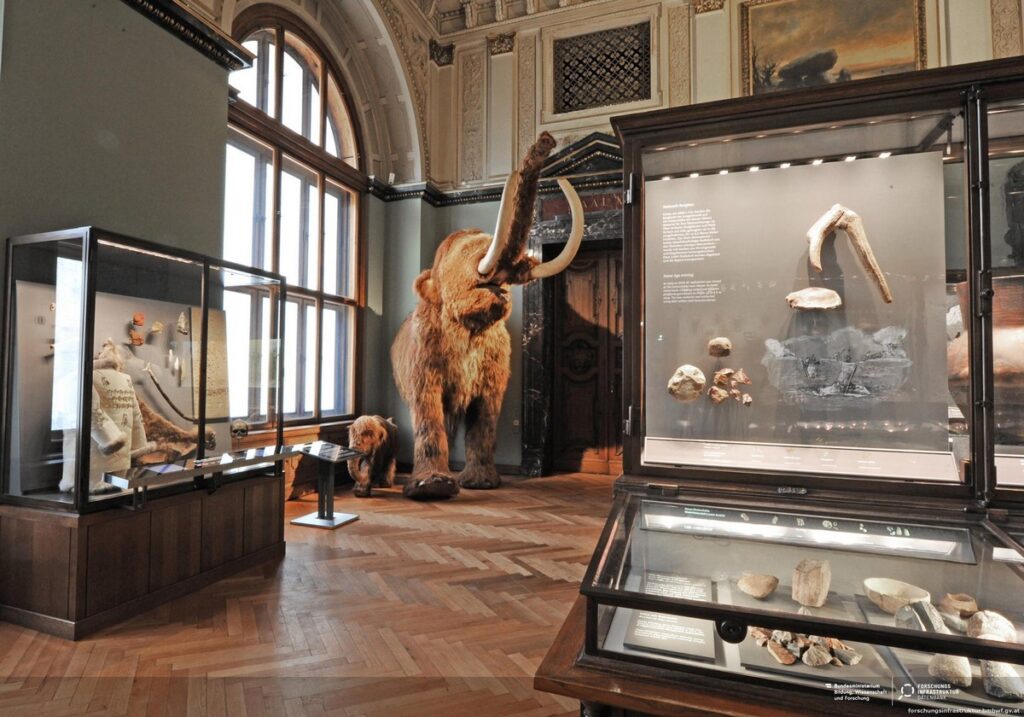
The Museum of Natural History in Vienna is a world-renowned institution dedicated to studying the natural world. The museum was established in 1869 and is home to a vast collection of specimens, including fossils, minerals, and live animals. Visitors can explore the museum’s exhibits, which cover a wide range of topics, from the evolution of life on earth to the diversity of the planet’s flora and fauna. The museum is known for its impressive dinosaur skeletons and its large collection of meteorites, minerals, and gems.
Traditional Viennese Coffeehouse
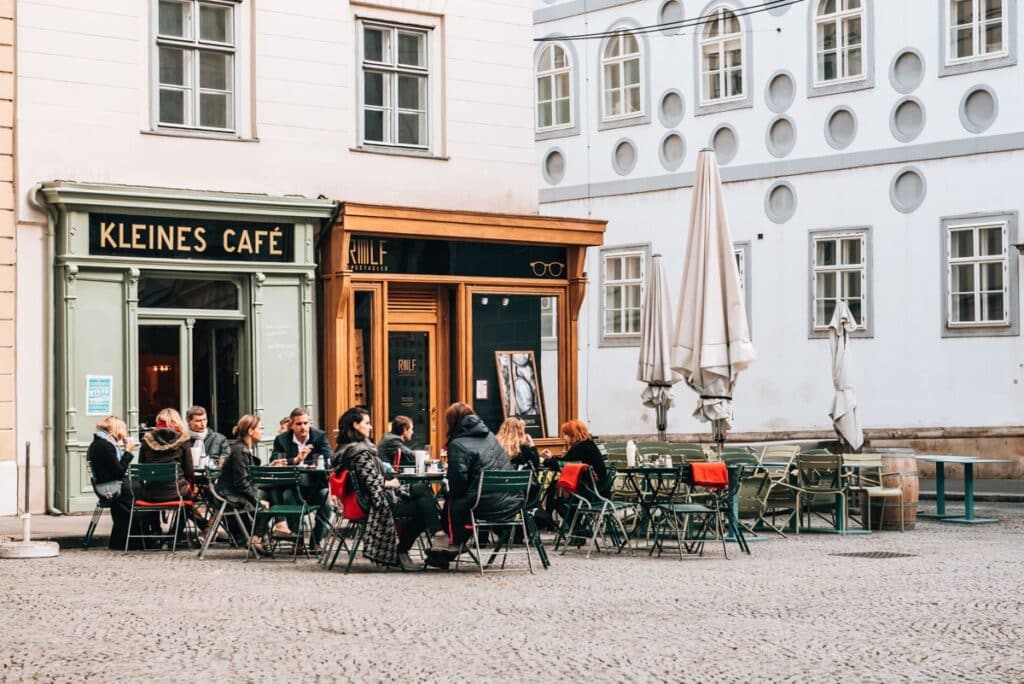
The traditional Viennese coffeehouse is a unique cultural institution and a staple of Viennese life. These cozy cafes have been serving coffee, pastries, and light meals since the 17th century and are known for their relaxed atmosphere and elegant interiors. Visitors to a Viennese coffeehouse can expect to find traditional decors, such as dark wood paneling, ornate moldings, and plush armchairs, as well as a menu of classic Viennese coffee and pastries. Some of the most famous coffeehouses in Vienna include the historic Café Central, the chic Café Hawelka, and the elegant Café Sacher.
The Liechtenstein Palace
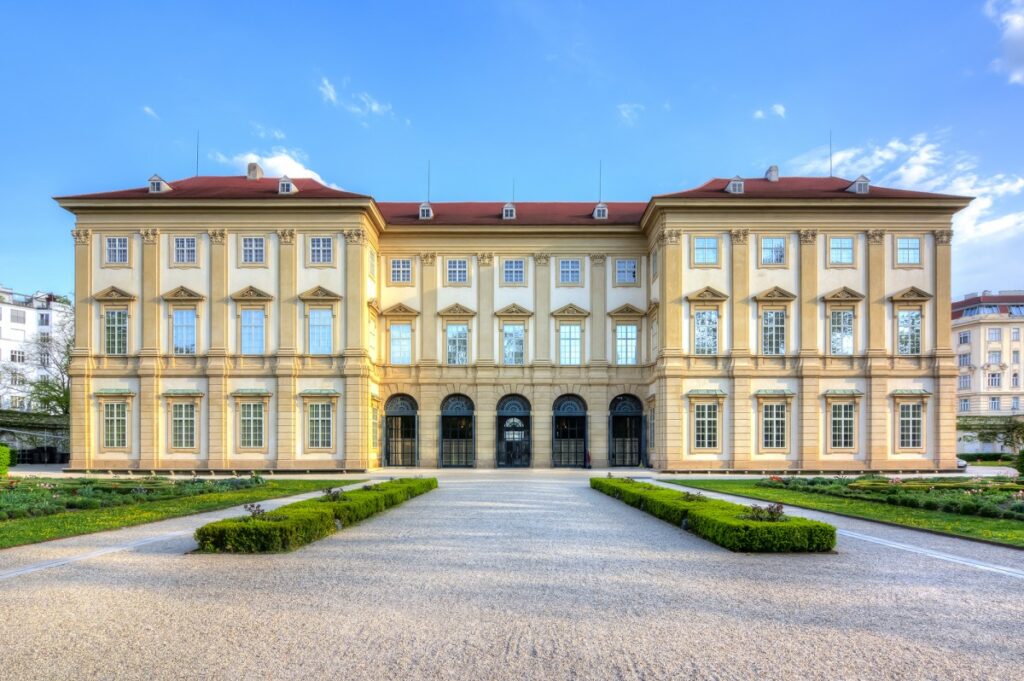
The Liechtenstein Palace is a historic building located in Vienna, Austria. It was built in the late 17th century for Prince Johann Adam Andreas of Liechtenstein and is notable for its baroque architecture and elegant interiors. Today, the palace is used as a museum and is open to the public for tours. Visitors can explore the palace’s grand halls and ornate rooms, including the famous Hall of Mirrors, decorated with frescoes and gilded moldings. The palace is also home to a collection of art and antiques, including paintings, sculptures, and furniture from the 16th to the 19th centuries.
The Augarten Park
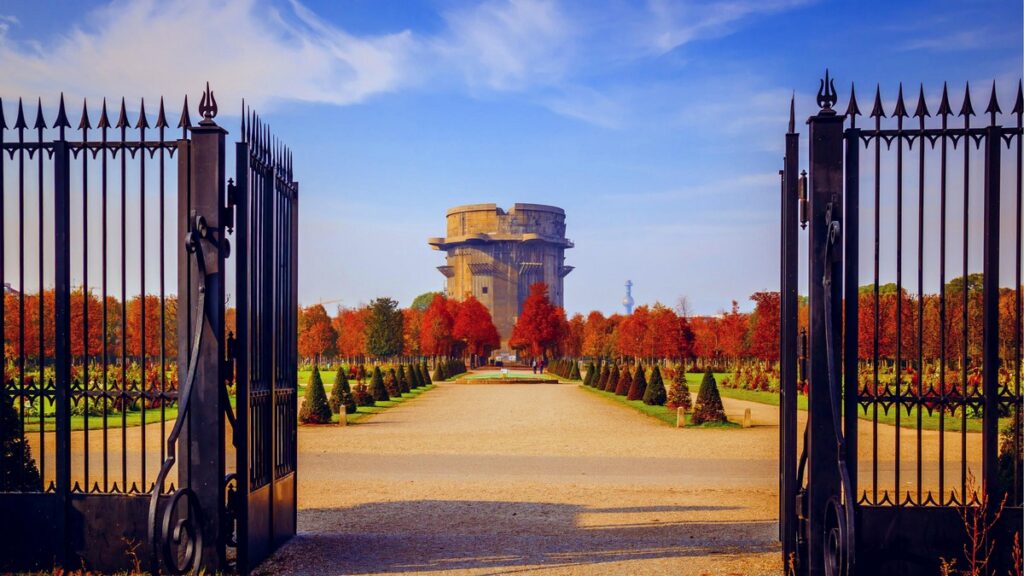
Augarten Park is a beautiful public park in Vienna. It was established in the 17th century and is one of the oldest parks in the city. The park covers over 50 hectares and features extensive lawns, formal gardens, and a large lake. It is also home to several historic buildings, including the Augarten Palace, a baroque building that now serves as a ceramic museum. Visitors to Augarten Park can enjoy various activities, including walking, jogging, boating, and picnicking. The park is also popular for families, with a playground and various sports facilities.
The Spanish Riding School
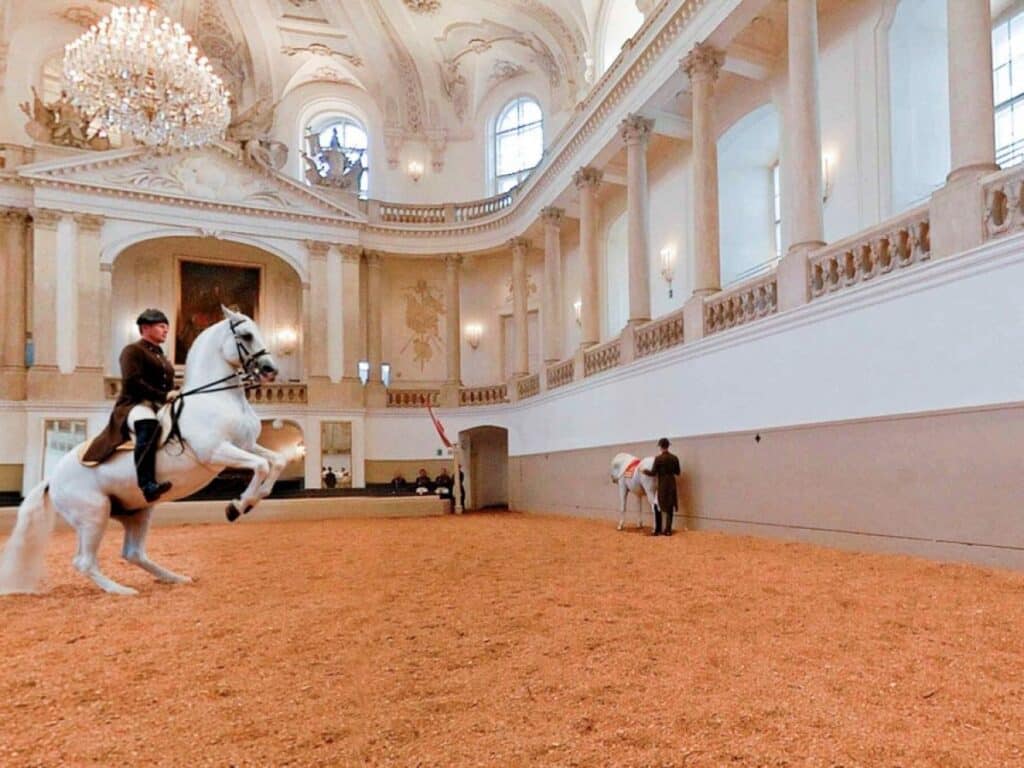
The Spanish Riding School in Vienna is a world-renowned equestrian institution specializing in the classical riding style known as haute école. Visitors to the Spanish Riding School can watch the school’s talented riders and horses perform in the historic Winter Riding School, considered one of the most beautiful riding halls in the world. The school’s performances feature a mix of classical equestrian skills, such as the levade and the courbette, and musical pieces that showcase the grace and beauty of both the riders and the horses.
Wiener Schnitzel
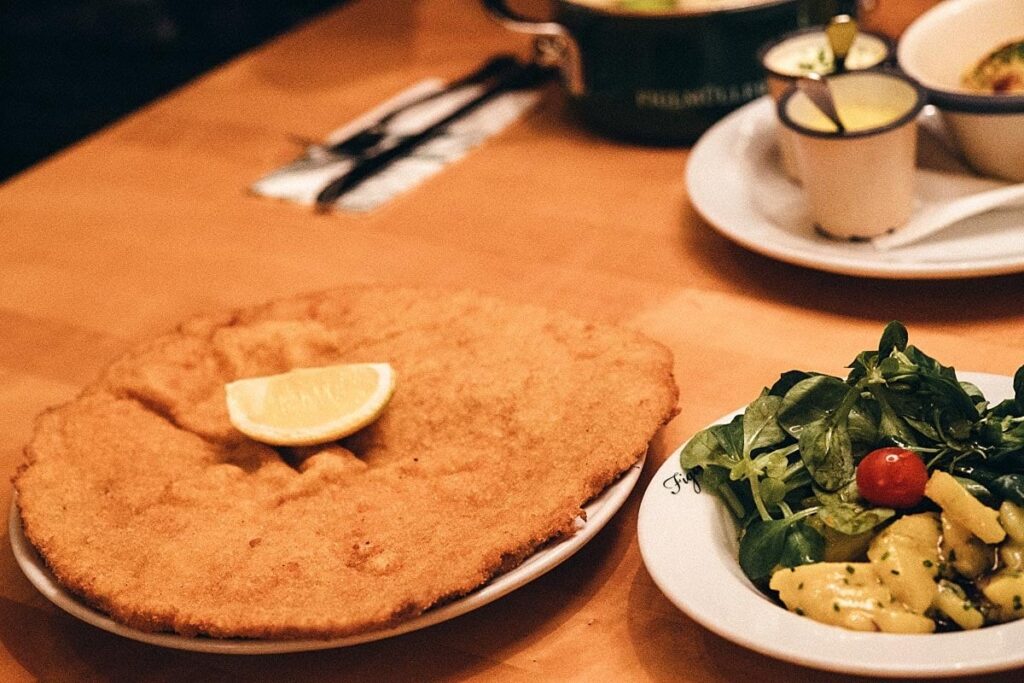
One of Vienna’s most famous dishes is Wiener Schnitzel. This traditional dish consists of a thin, breaded veal cutlet that is fried until crispy and served with various accompaniments, such as potatoes, lingonberry sauce, or mixed greens. Wiener Schnitzel is considered one of the national dishes of Austria and is widely popular in Vienna, where it has been a staple of the city’s cuisine for centuries. The dish is often served in traditional Viennese restaurants, where it is made with care and precision, following the original recipes passed down through generations.
